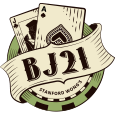A few Answers
First, full disclosure: I am by no means an expert on shuffle tracking. I have dabbled in it a little bit, with moderate success. I have used a fairly intuitive, seat-of-the pants approach. If you are serious, you should try to be as rigorous as possible.
For shuffle tracking, you should use a blanced, ace-reckoned count. Hi/Lo is most common, but Halves and Revere Point Count are also feasible. The easiest shuffles to track are single pass shuffles. These are shuffles where each group of cards is riffled with just one other group of cards of approximately equal number. With a single pass shuffle, an approximation is possible which sacrifices some accuracy, but makes the process much simpler. You identify one segment of rich count and follow it through the shuffle, assuming that the cards it is mixed with are of average composition. For example, if you have identified a 0ne deck section with a RC of +6, the remaining 5 decks have a RC of -6. The one deck segmant has a TC 0f +6. The remaining 5 decks have a TC 0f -1.2. If you mix your +6 deck with a -1.2 deck, you will end up with 2 decks at +4.8, or a TC of +2.4. If you have the cut card, you cut these two decks to the top. If not, you try to observe where they end up, and bet bigger when you reach this segment. Of course, the assumption that the segment that your segment gets mixed with is of average composition introduces quite a bit of error into the process. It is entirely possible that your +6 deck gets mixed with a -6 deck, leaving two decks that are neutral. However, most of the time it works pretty well. You will find that the count drops just about where you expect it to.
The easiest segment to track is the cutoffs. If you keep your count until the last card is dealt, you know the count of the cutoffs. Unfortunately, many casinos will break the cutoffs into three segments and insert them into three different places in the discards. The second easiest segment to track is the top of the shoe.
You just remember the count at your stopping point, and reverse the sign. For segments in the middle of the shoe, you have to use the difference between starting and ending points, and reverse the sign.
Note that this is only feasible for some form of single pass shuffle. If, as is fairly common, a second round of riffling is done, any segment that you track will make up only 1/4 of the final mix. At this point, you really have to have the whole shoe and shuffle mapped out and know the count of all the pieces, which is much more difficult to do in casino conditions.










